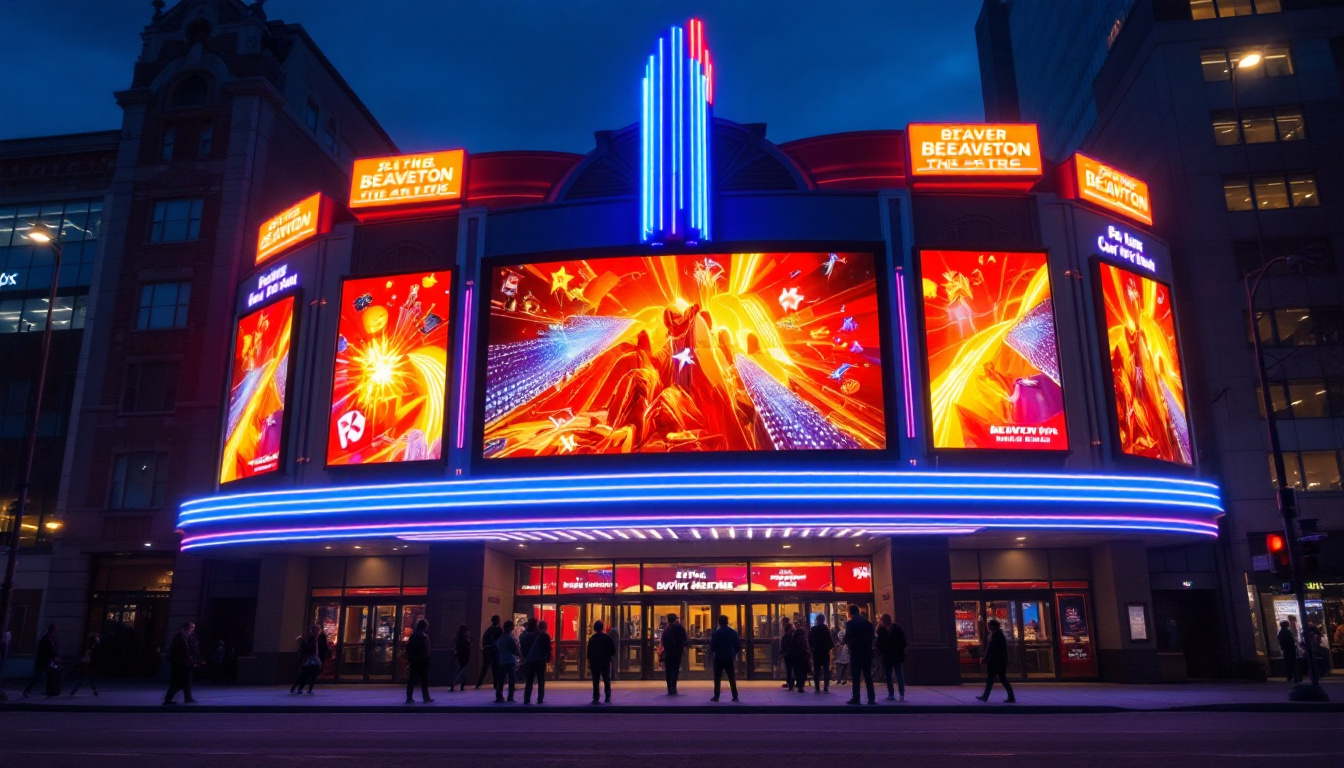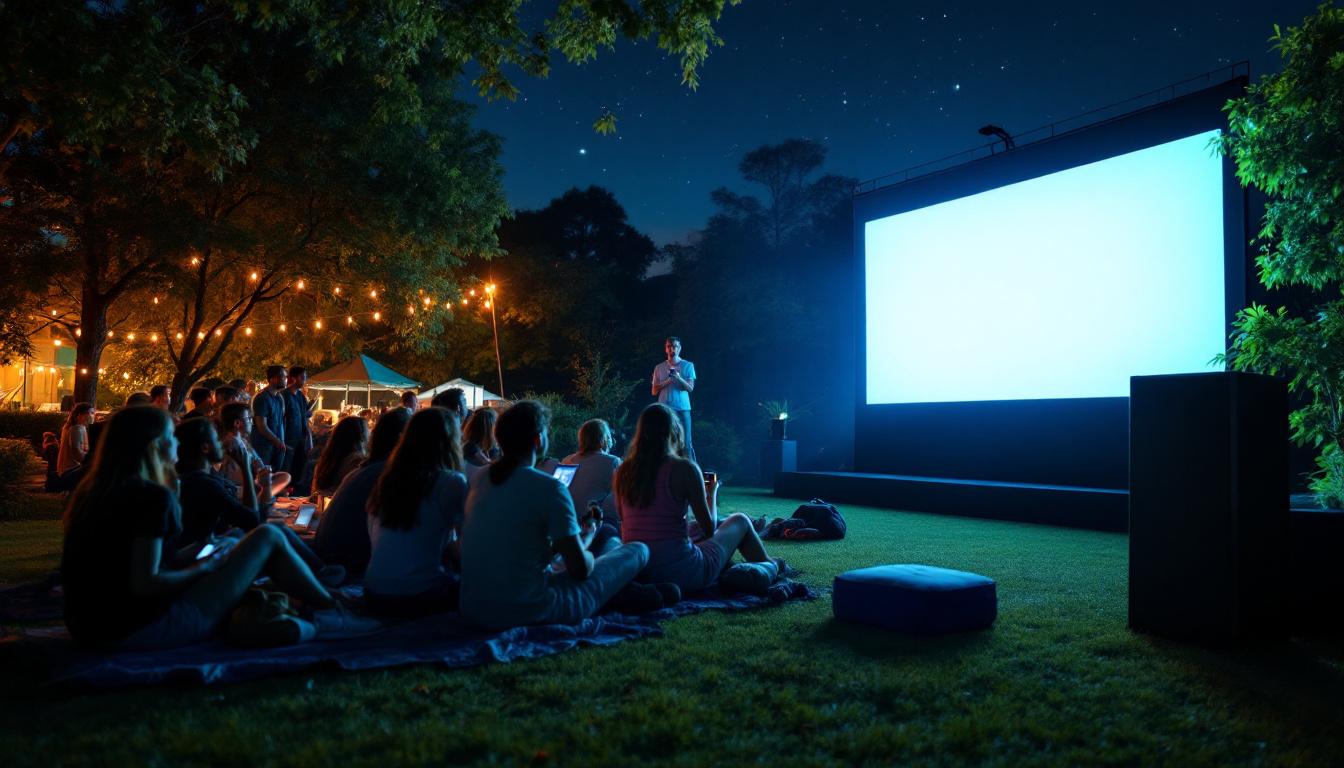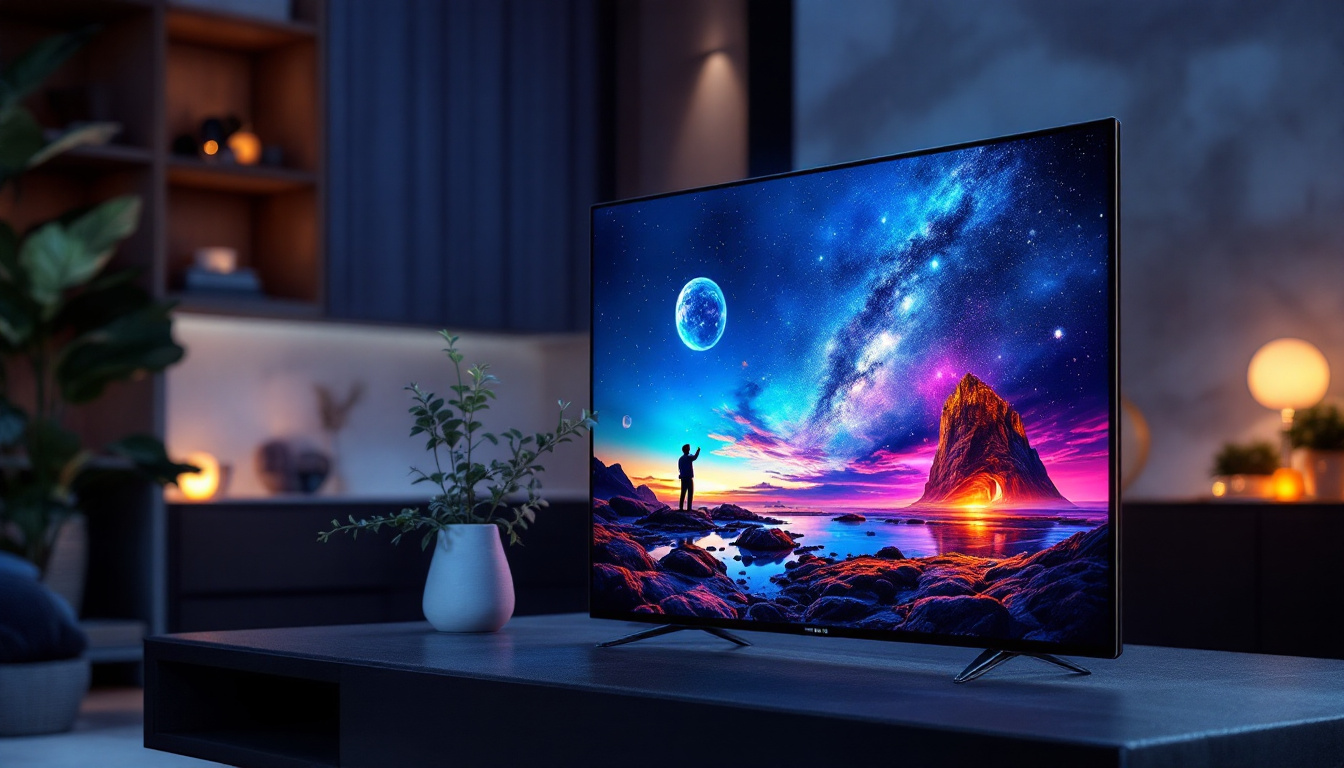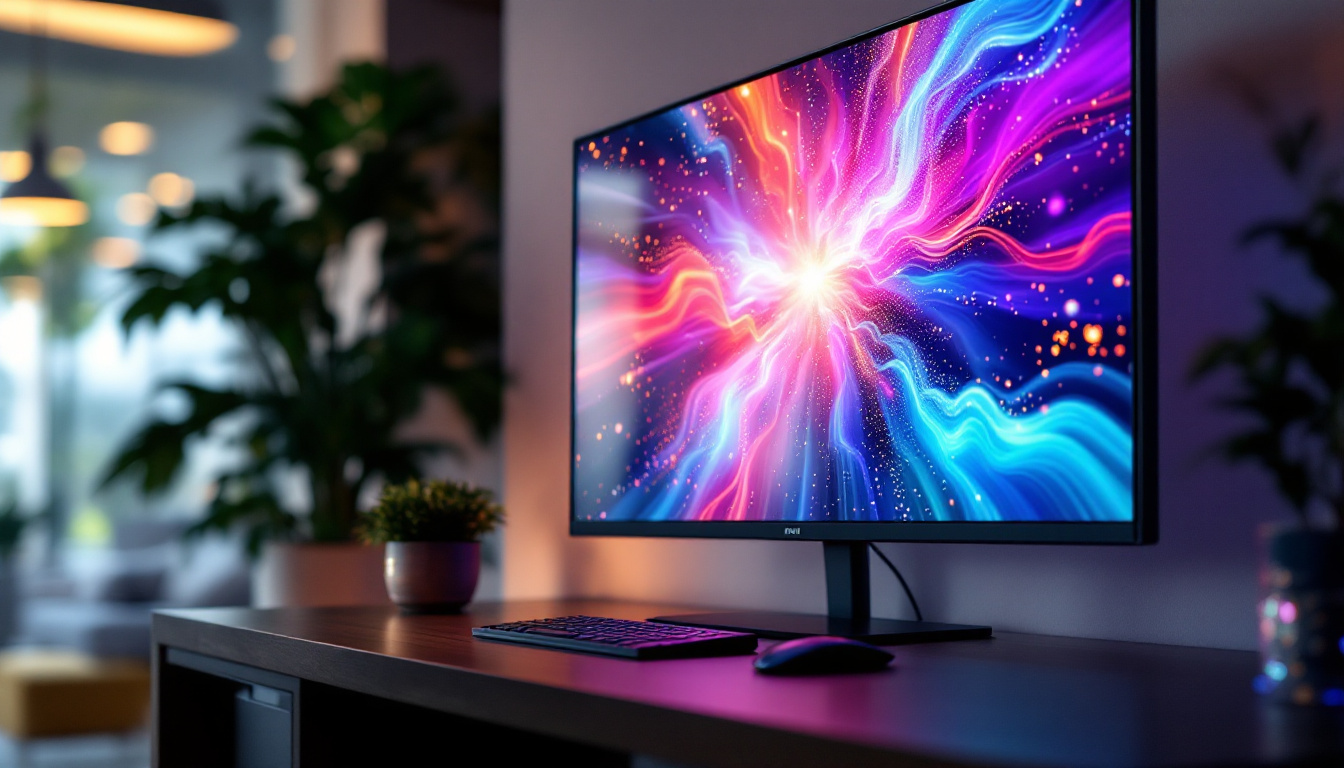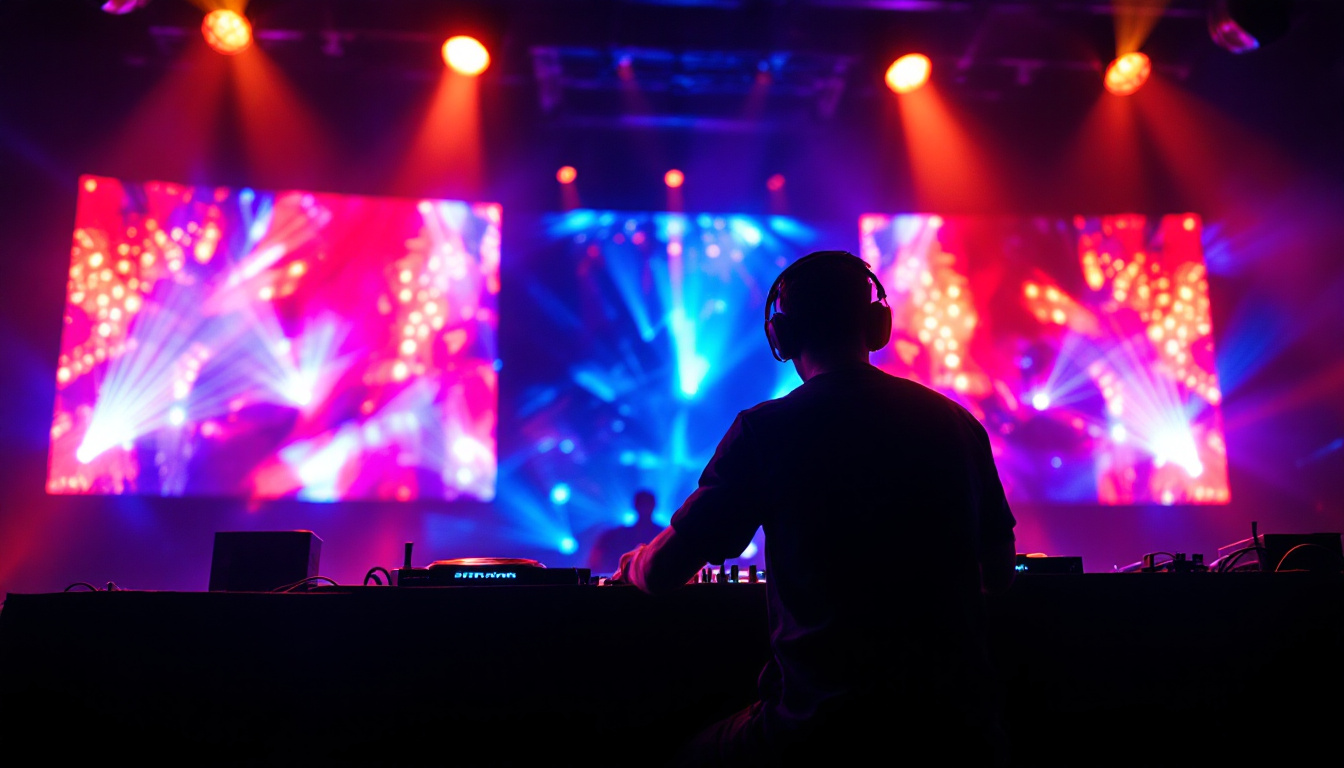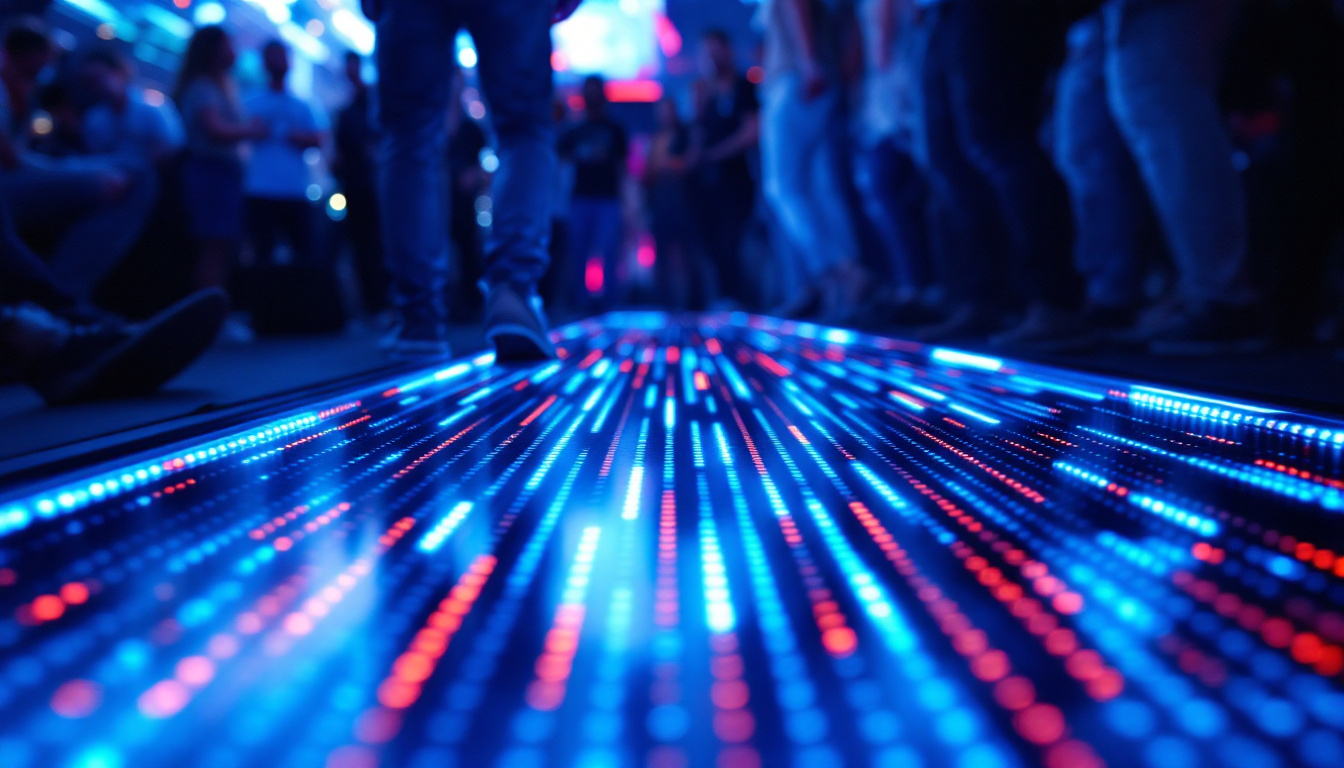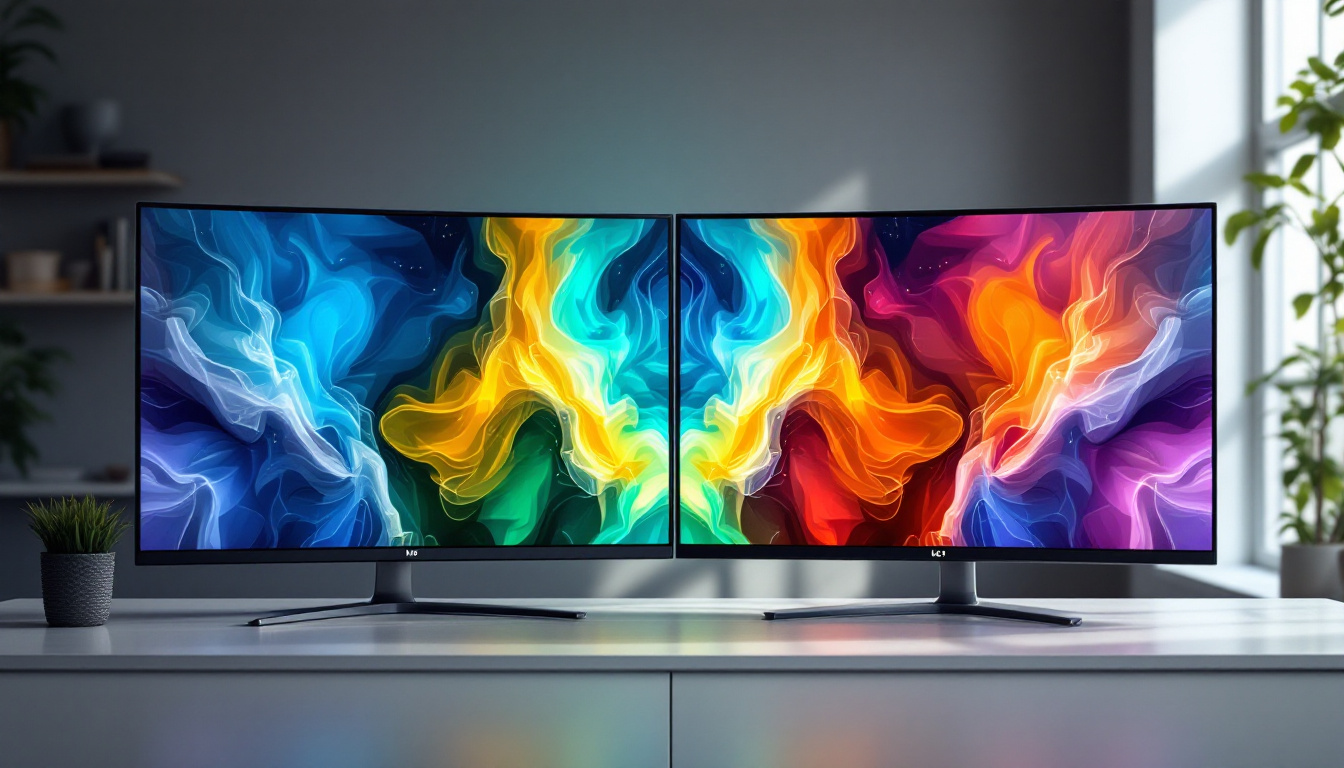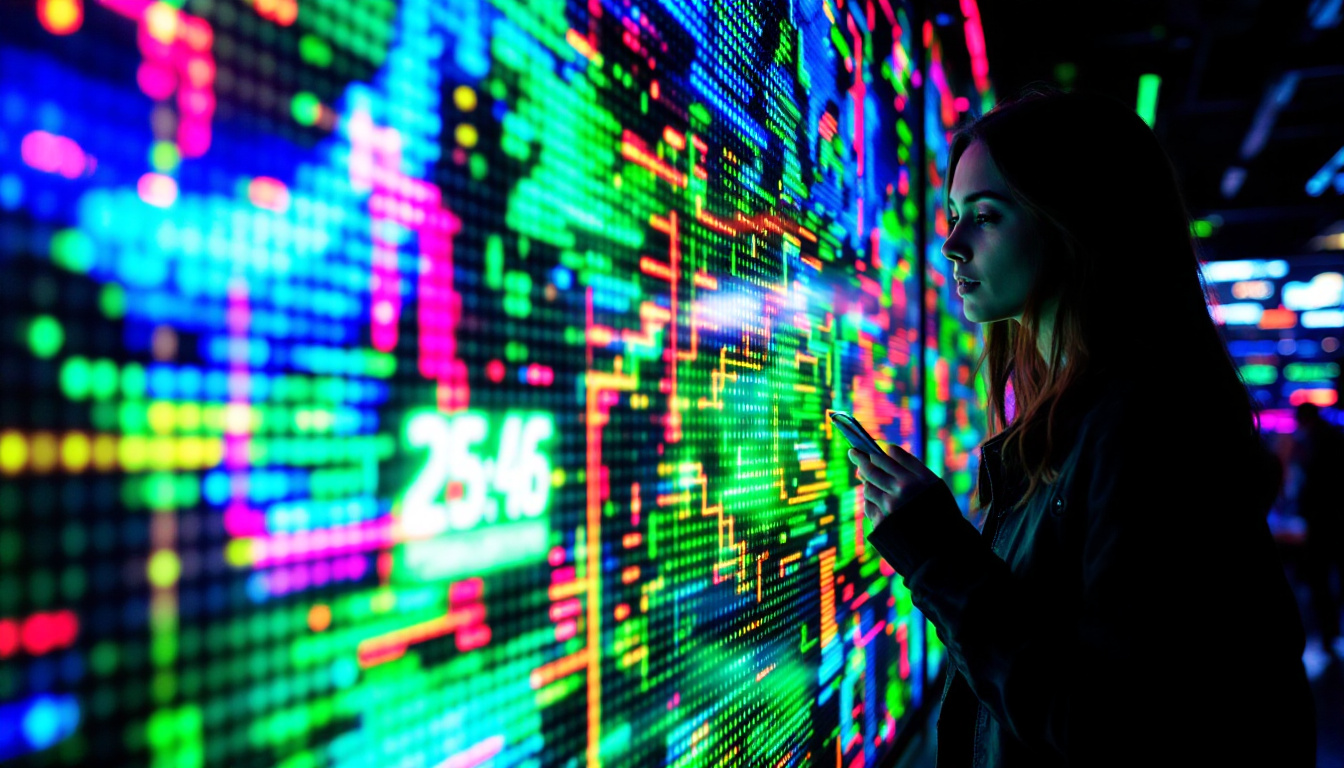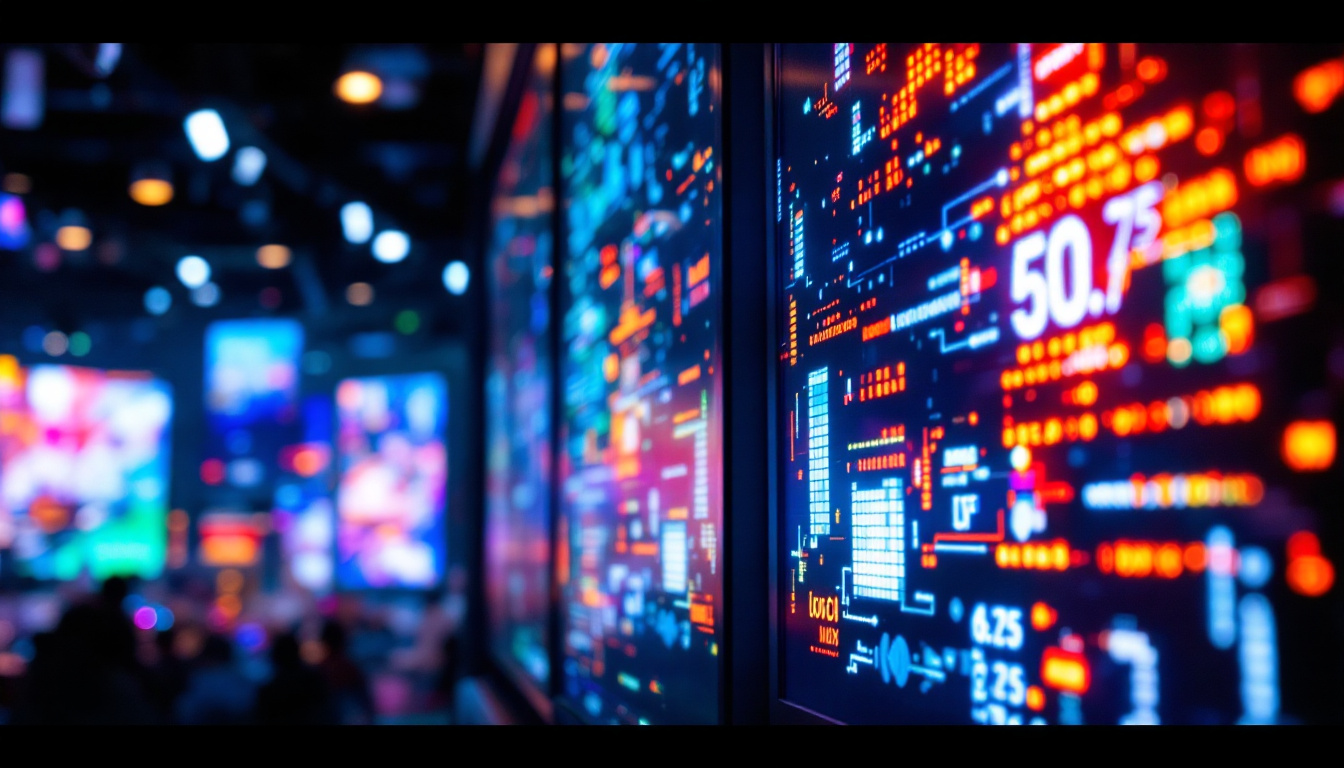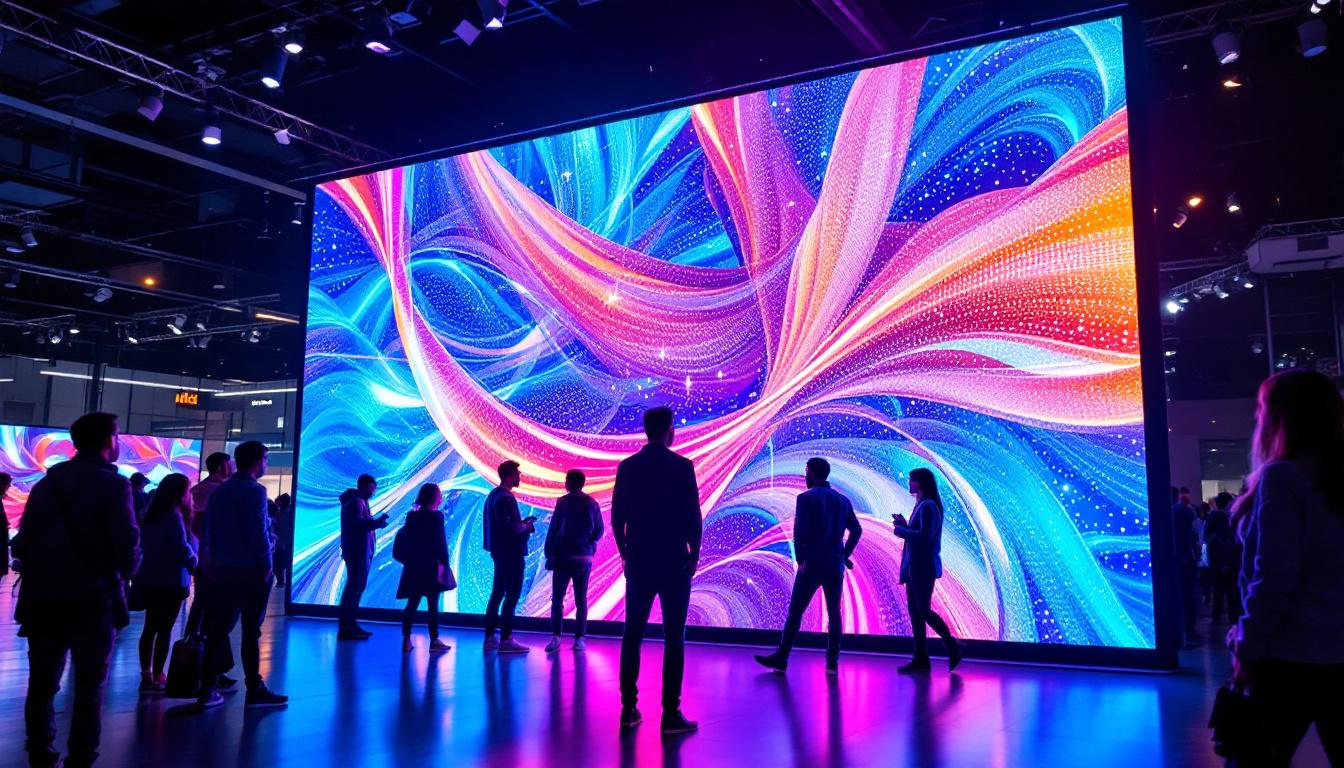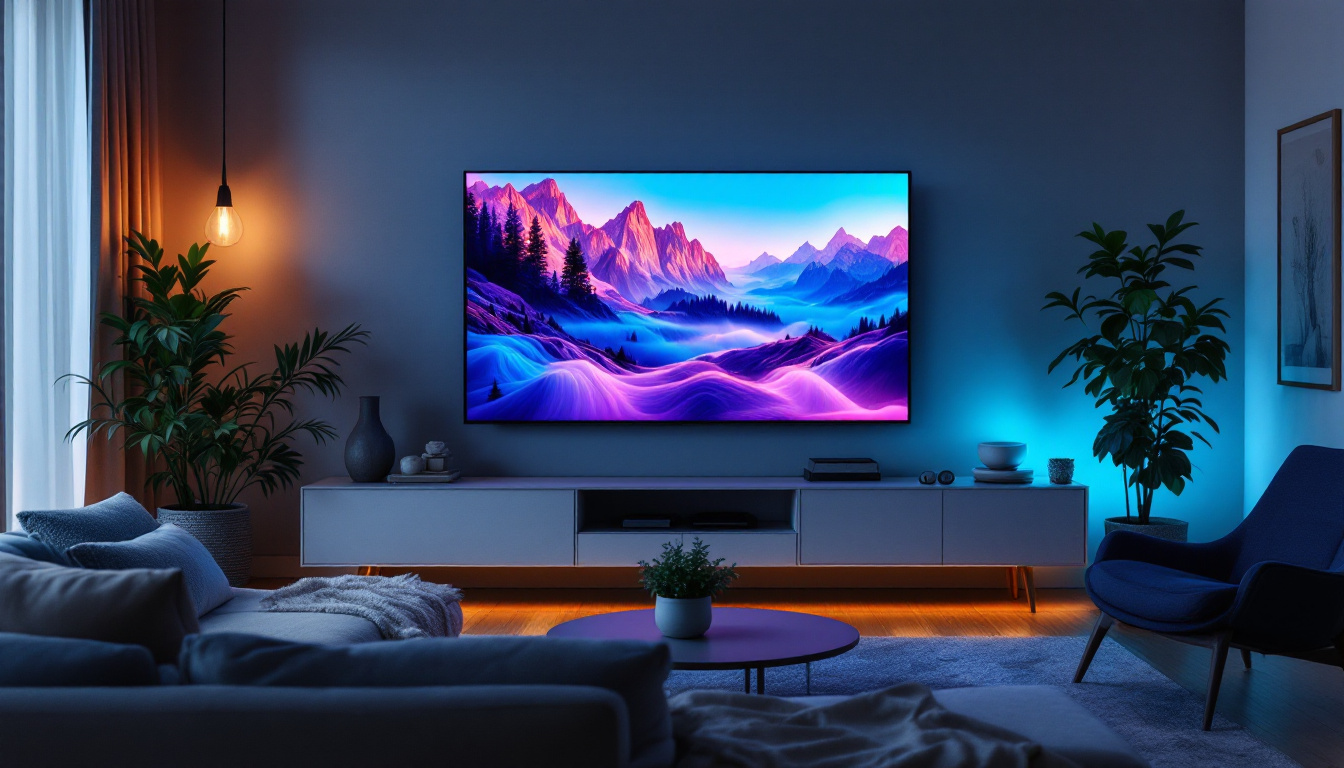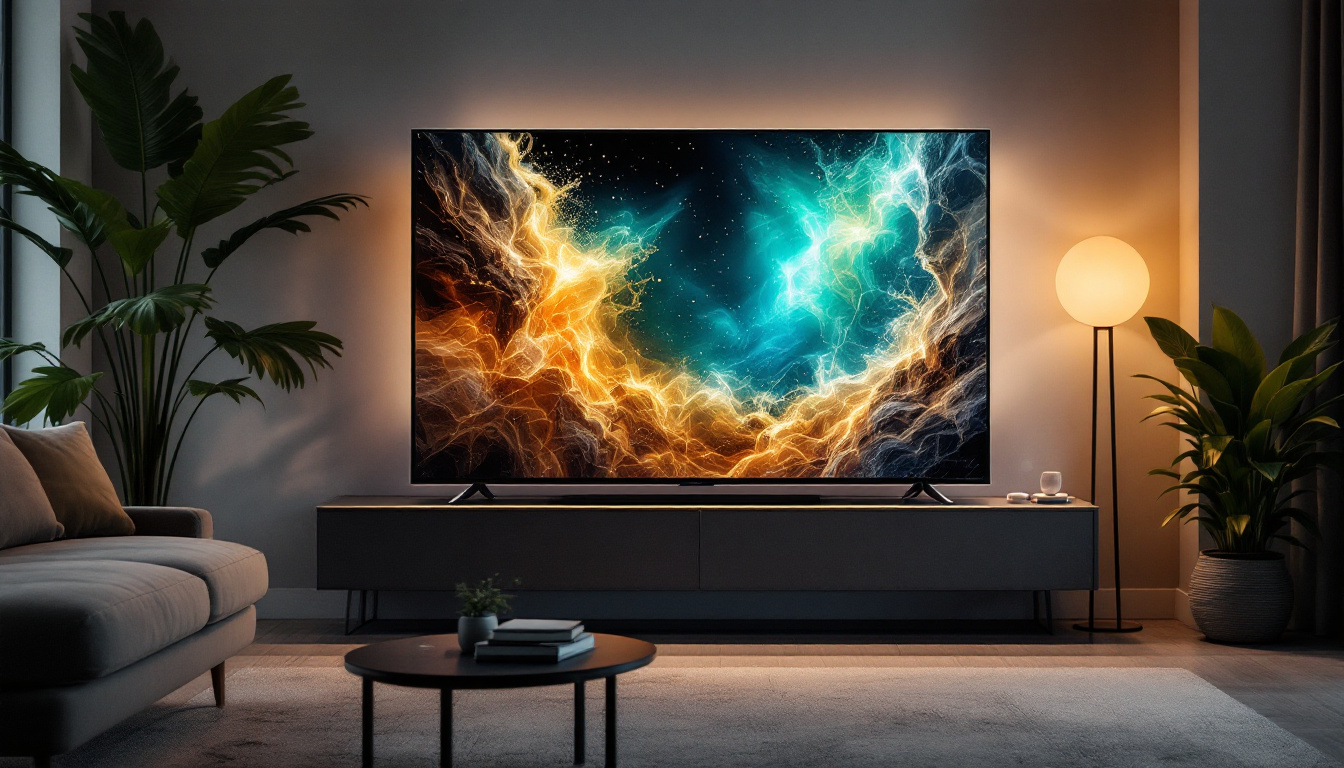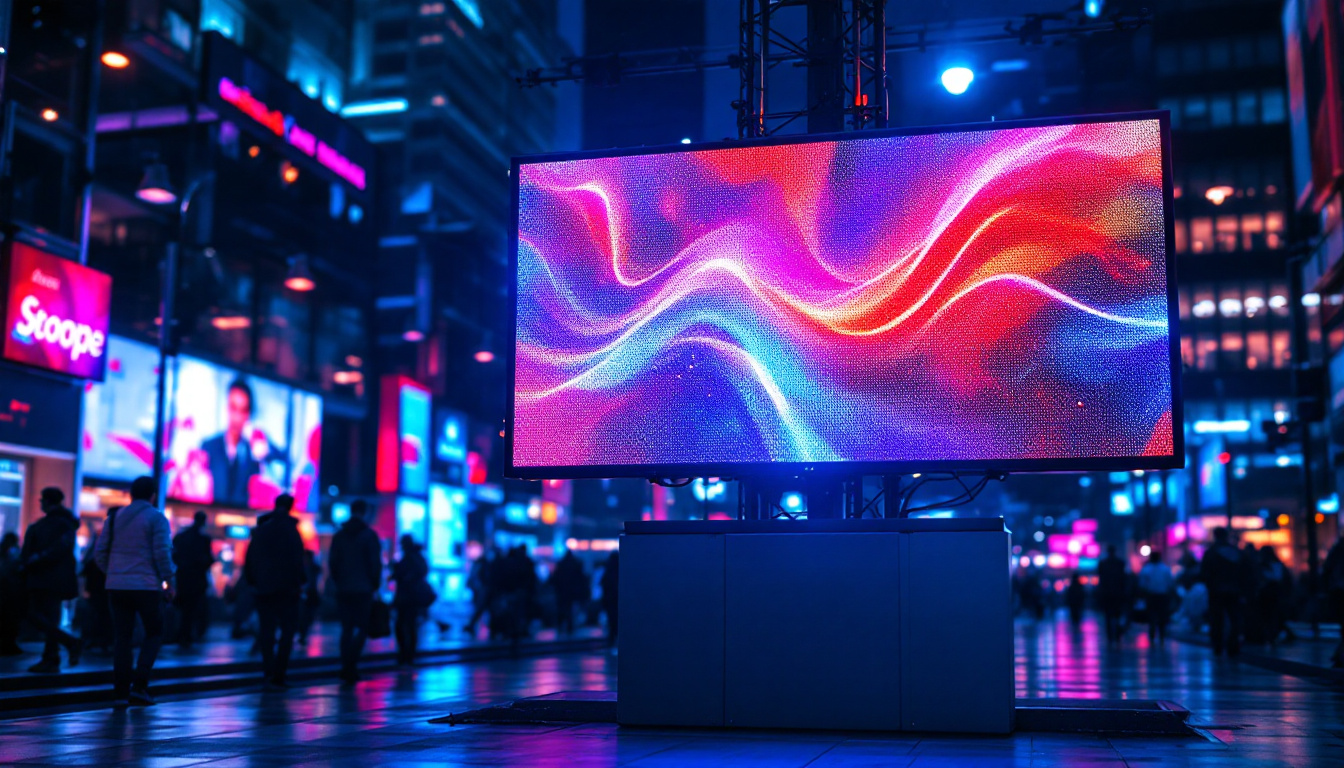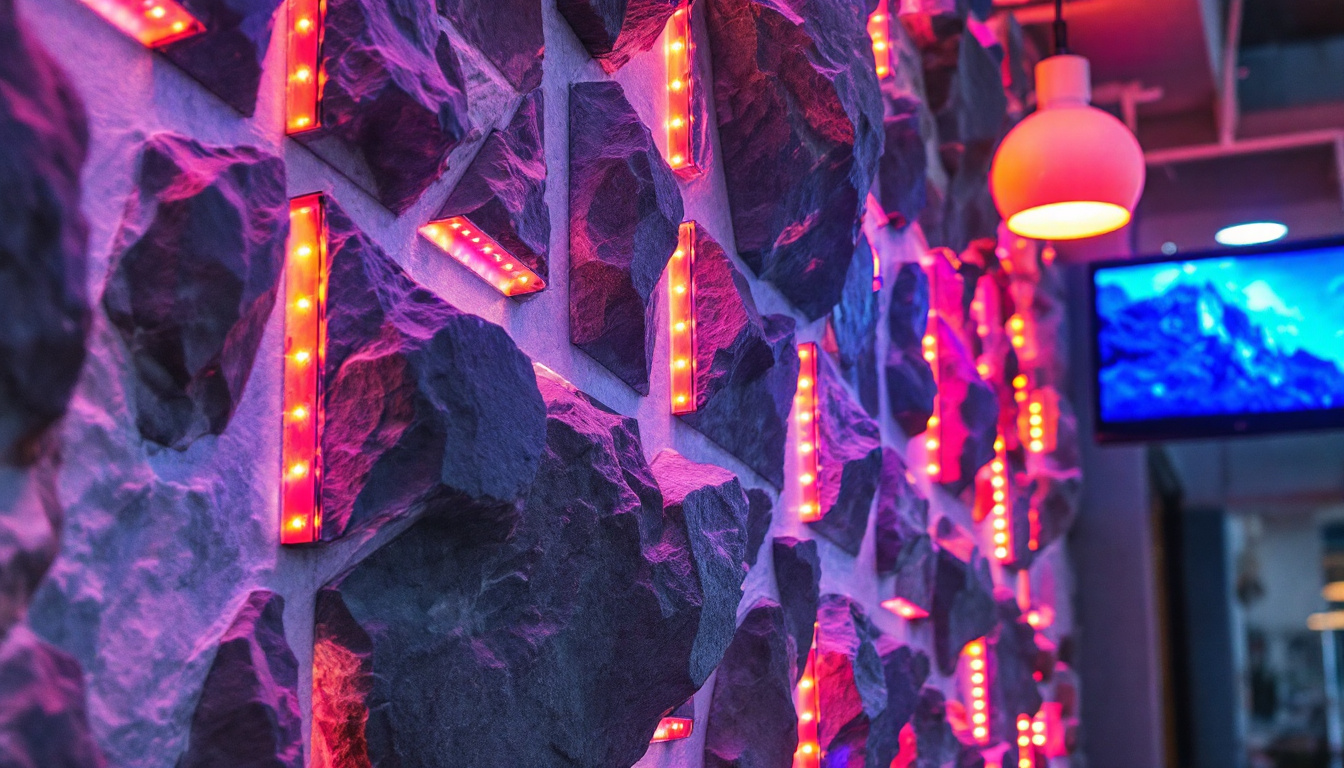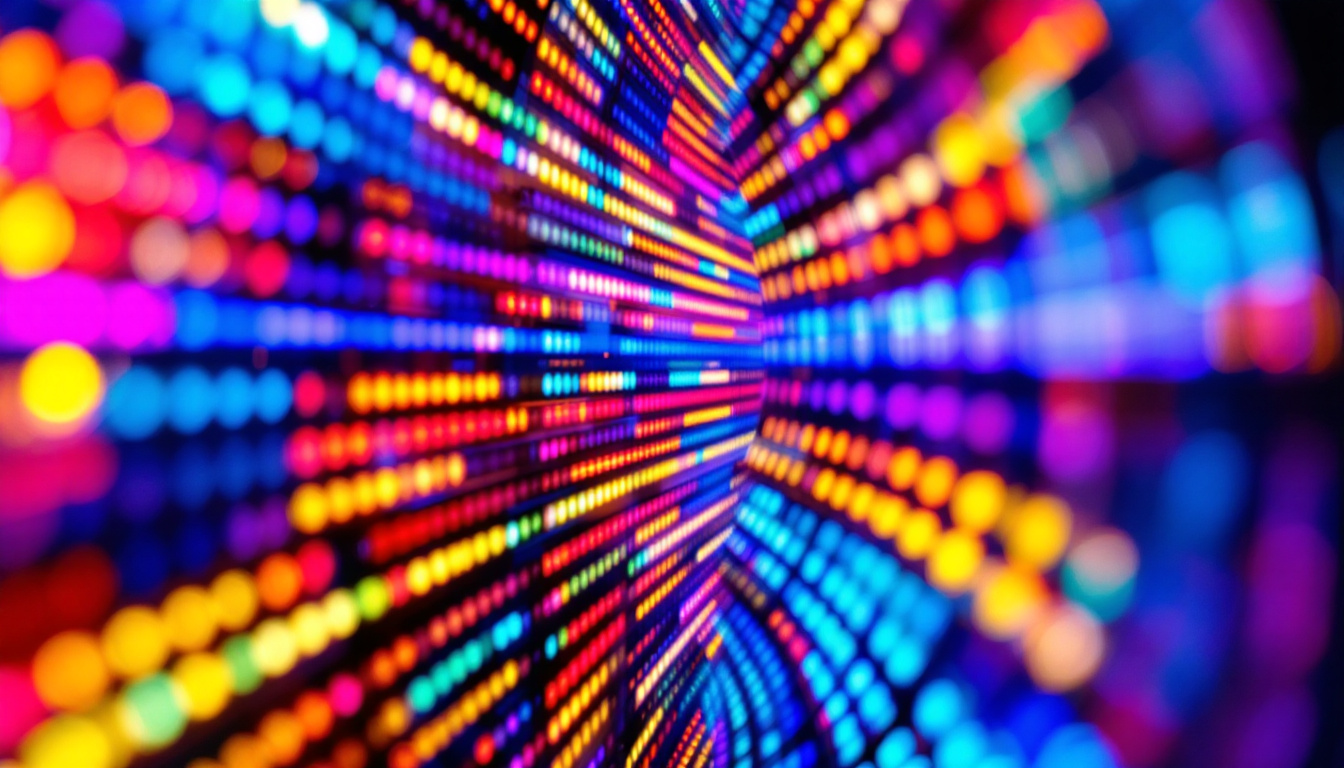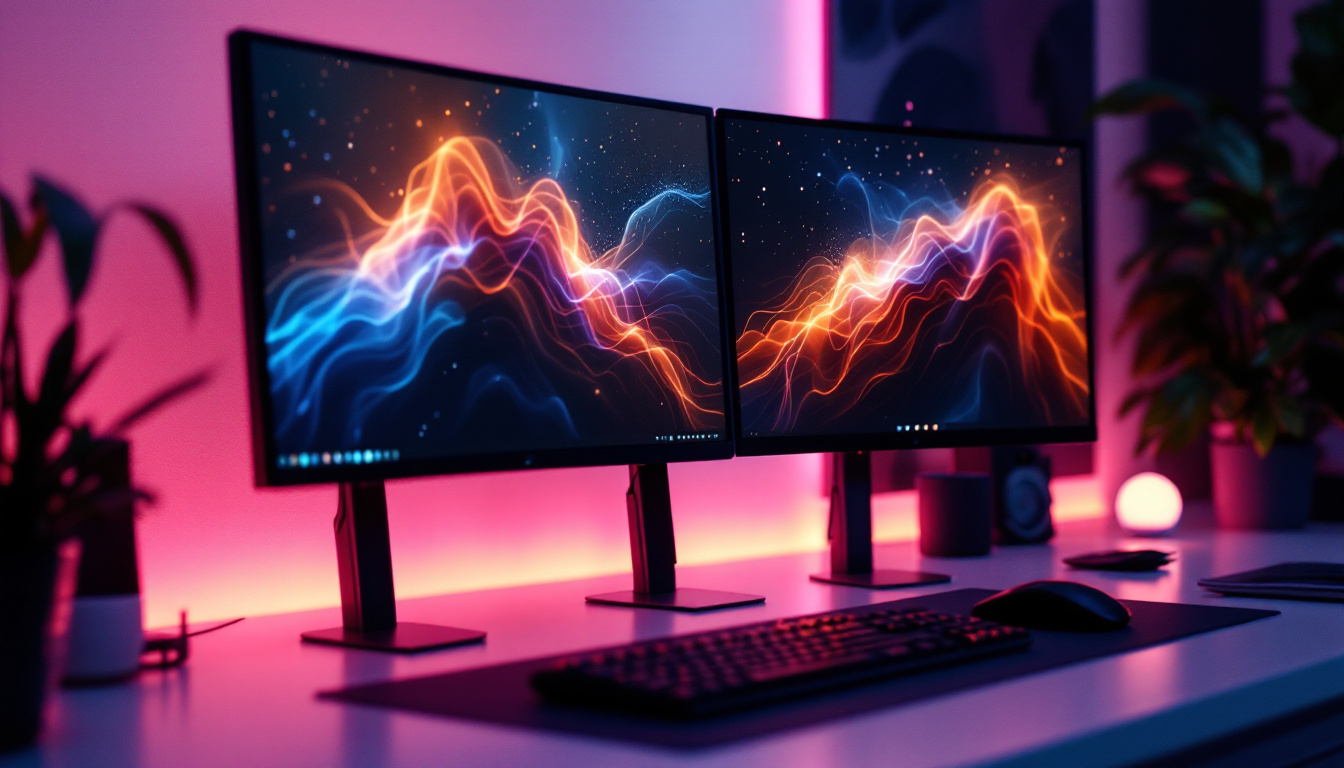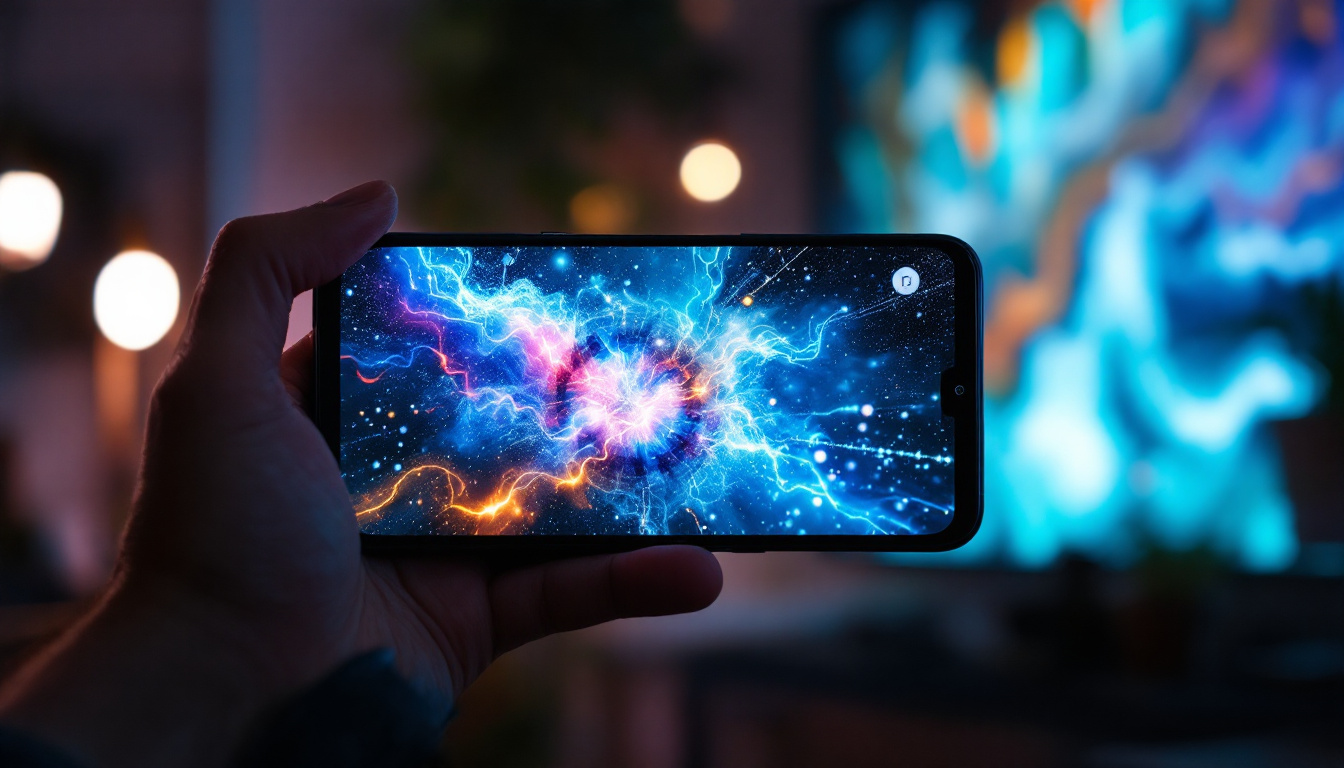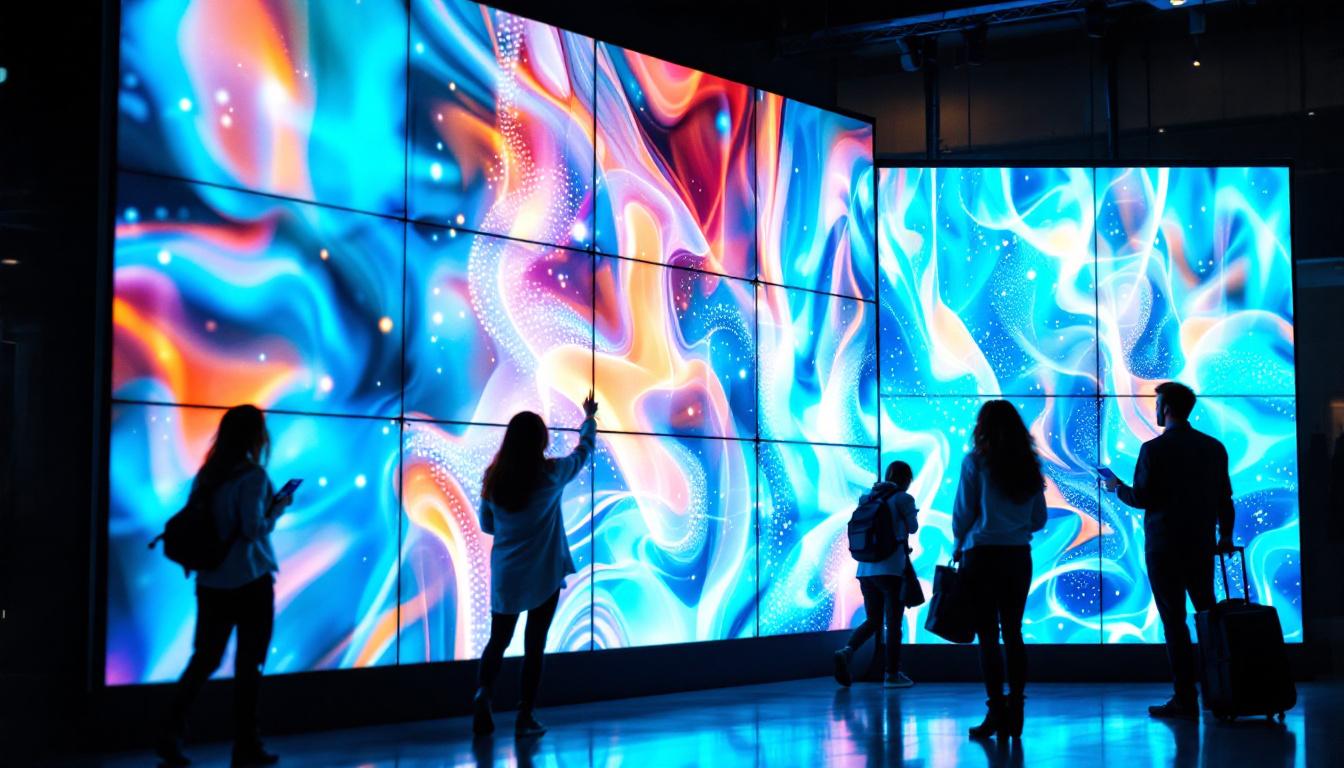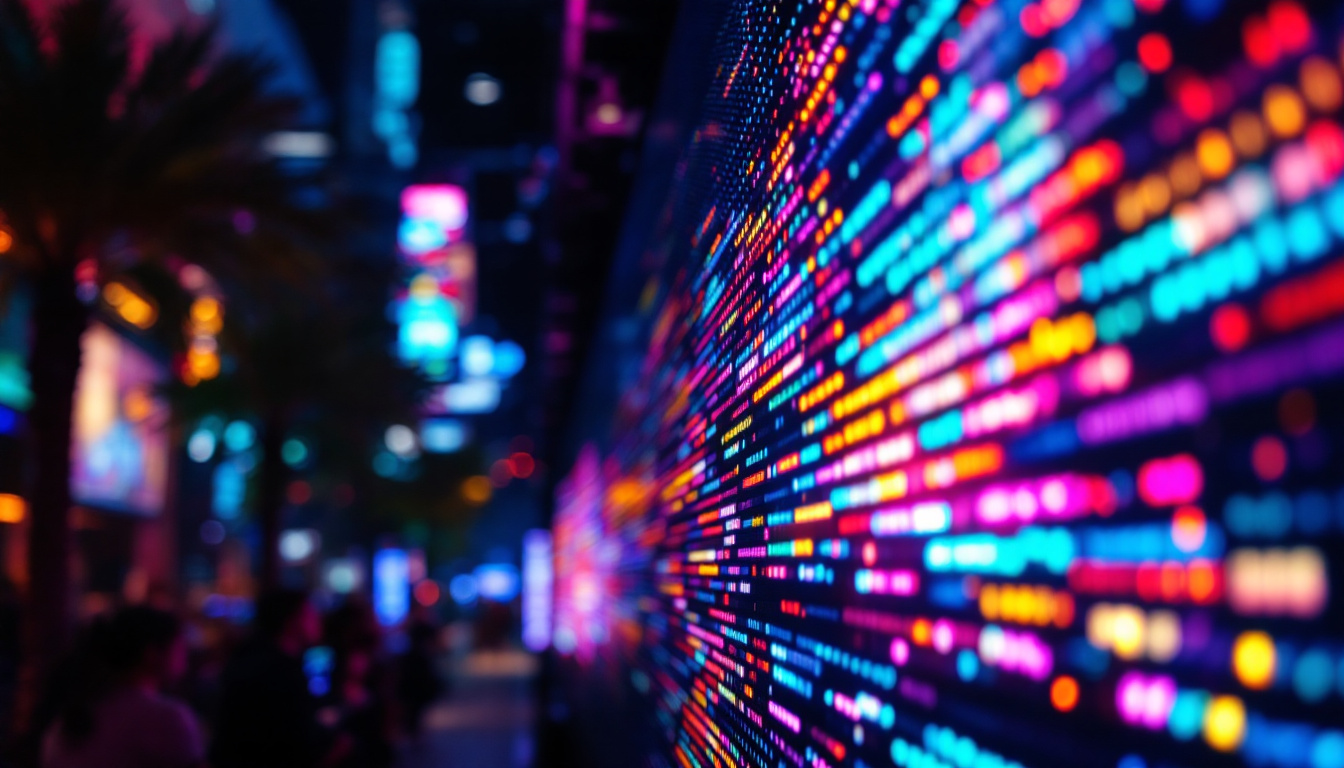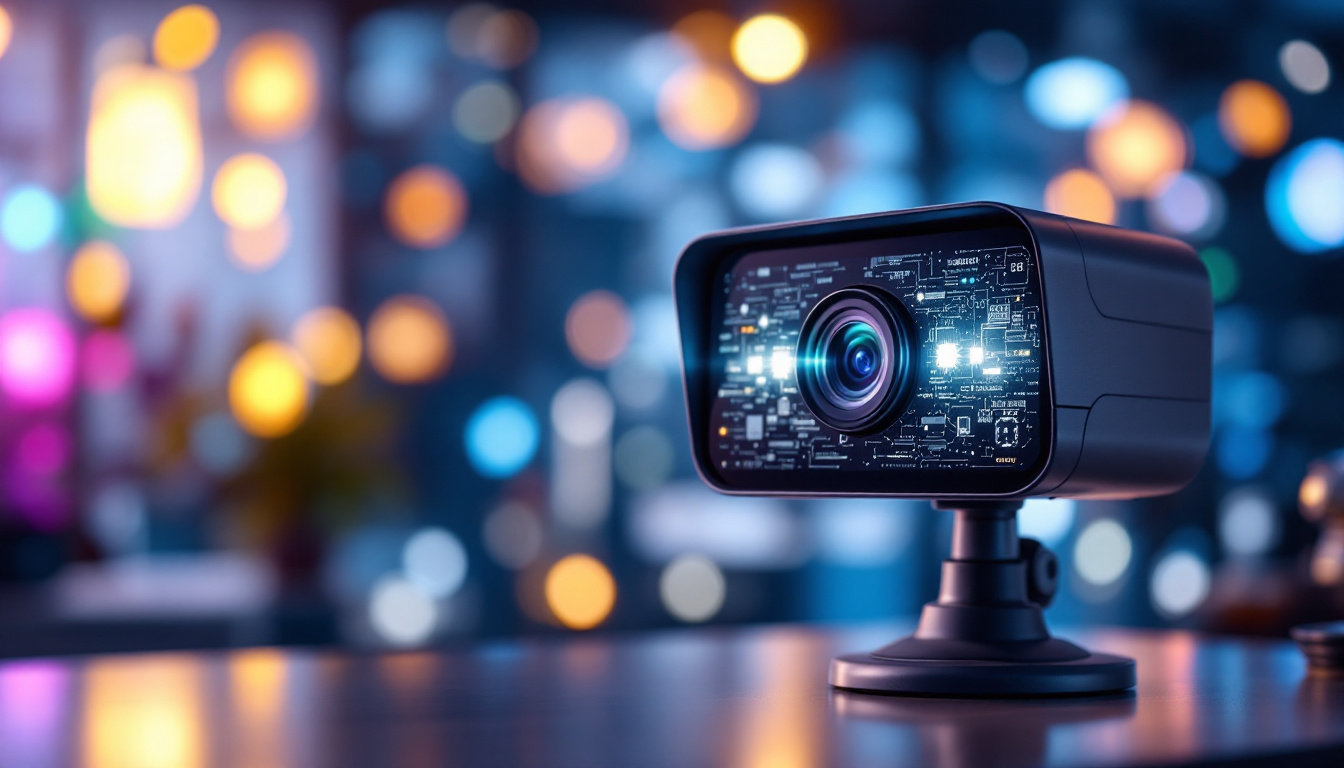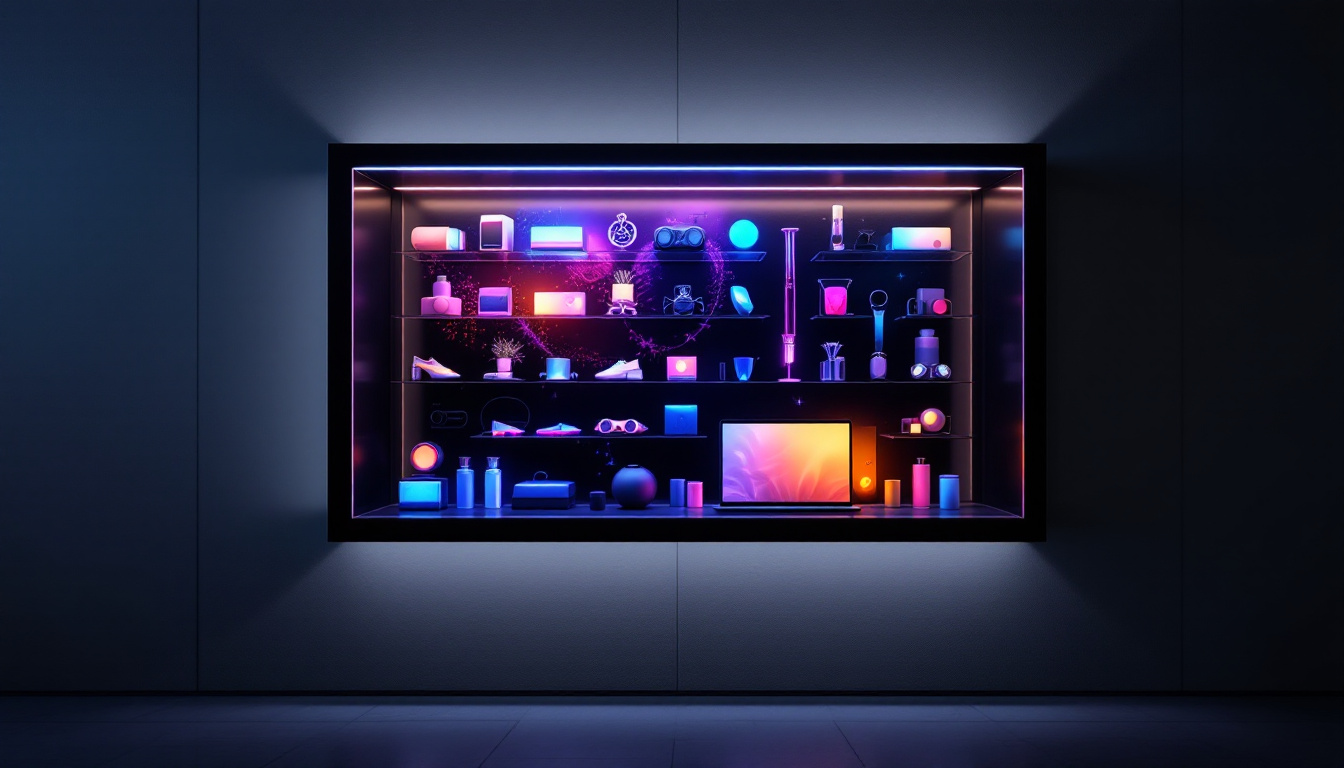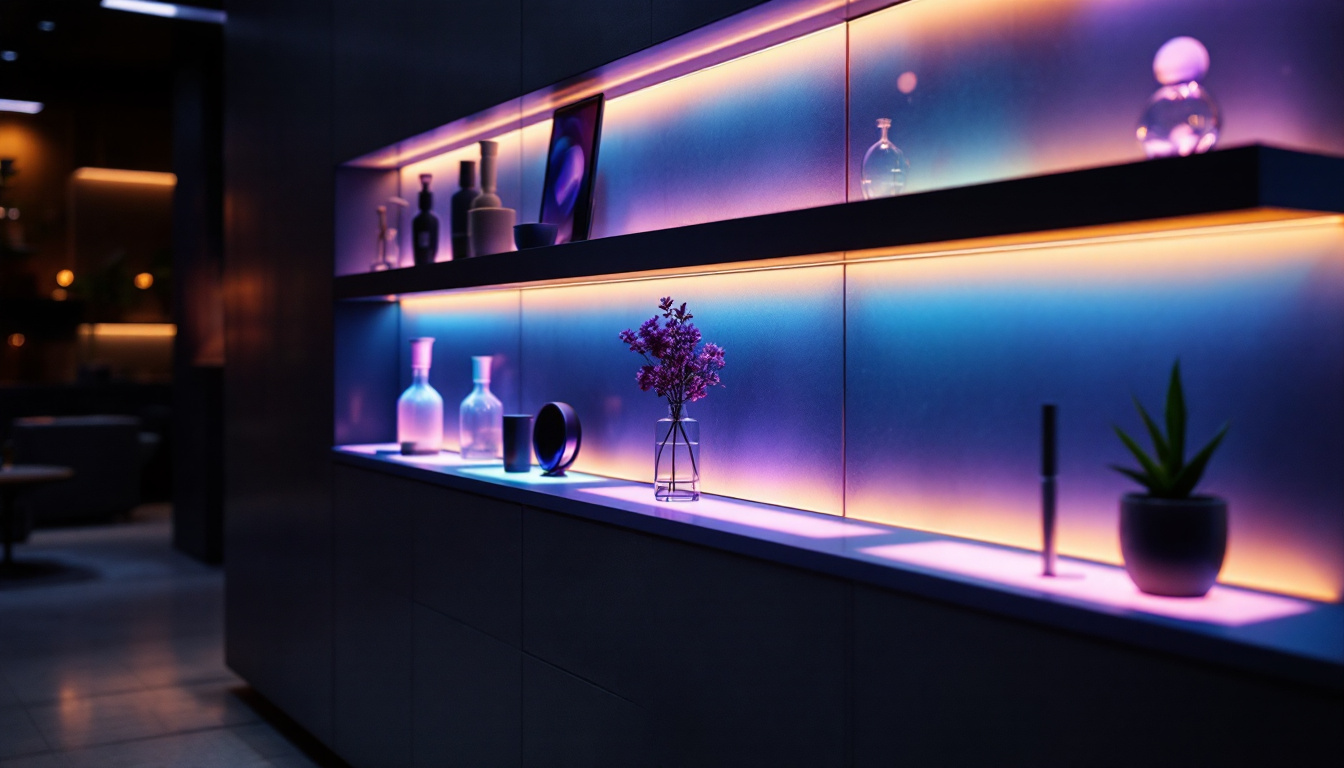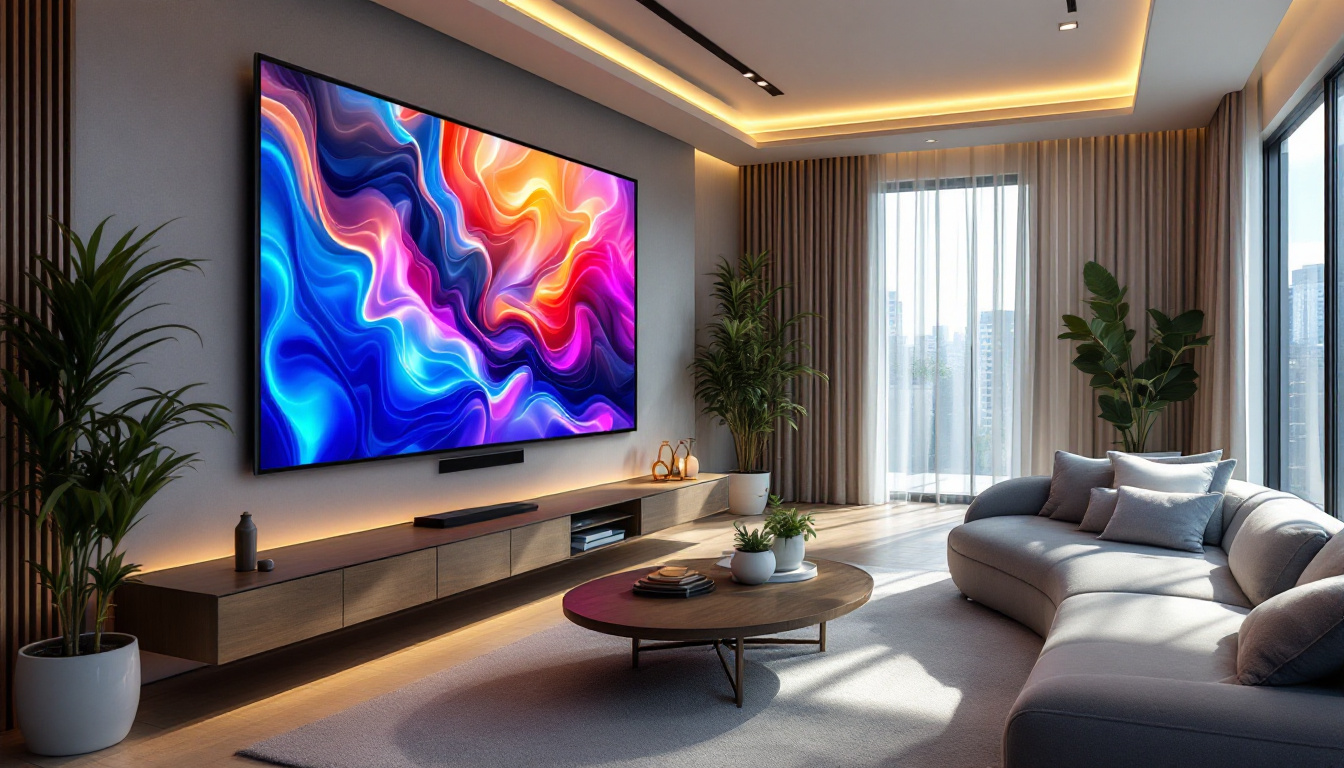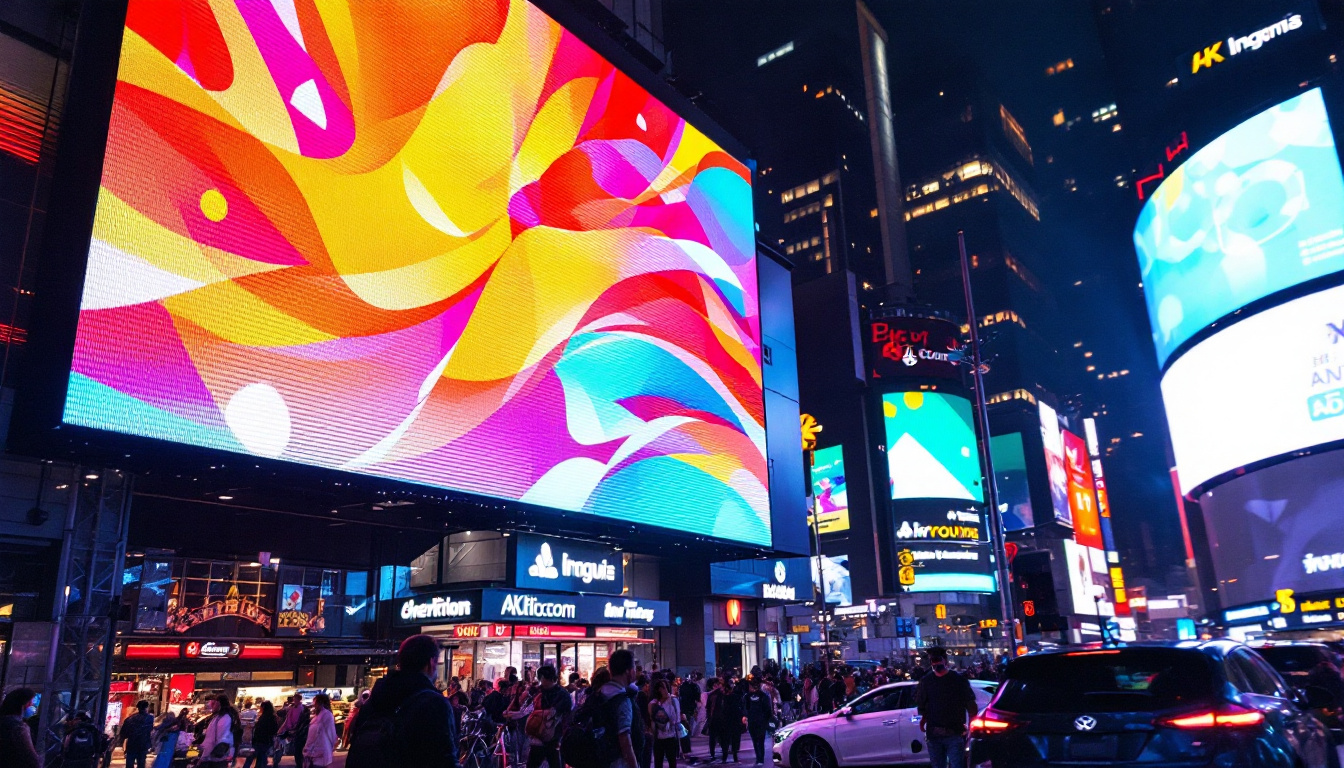In recent years, movie theaters have undergone a significant transformation, particularly in their display technologies. One of the most notable advancements is the adoption of LED displays. This article delves into the specifics of LED technology and its impact on the movie-going experience, particularly in Beaverton’s thriving cinema scene.
The Rise of LED Technology in Cinemas
LED (Light Emitting Diode) technology has revolutionized various industries, and cinema is no exception. As theaters strive to enhance the viewing experience, LED displays have emerged as a popular choice due to their superior image quality, energy efficiency, and versatility.
Understanding LED Technology
LED displays work by using semiconductor materials that emit light when an electric current passes through them. This technology allows for brighter images, deeper blacks, and a wider color gamut compared to traditional projection systems. The result is a more vibrant and immersive viewing experience.
Moreover, LED technology offers significant advantages in terms of longevity and maintenance. Unlike traditional bulbs that require frequent replacements, LED displays can last for tens of thousands of hours, reducing operational costs for theaters. This longevity not only benefits theater owners but also contributes to a more sustainable approach to cinema operations, as fewer resources are consumed in manufacturing and disposing of traditional bulbs.
Benefits of LED Displays in Movie Theaters
One of the primary benefits of LED displays is their ability to produce high dynamic range (HDR) content. This feature allows for a more extensive range of brightness and contrast, making scenes appear more lifelike. Audiences can enjoy the subtle details in dark shadows and bright highlights, enhancing the overall storytelling experience.
Additionally, LED displays provide better viewing angles. Unlike traditional projectors, which can suffer from color distortion and loss of brightness at extreme angles, LED screens maintain consistent quality regardless of where viewers are seated. This is particularly beneficial in larger theaters where seating arrangements can vary widely. Furthermore, the flexibility of LED technology allows for creative installations, such as curved screens or even immersive 360-degree setups, which can transform the traditional cinema experience into something truly extraordinary.
Another noteworthy advantage of LED technology is its ability to seamlessly integrate with other digital innovations. The rise of virtual reality (VR) and augmented reality (AR) in entertainment is paving the way for new storytelling methods, and LED screens can play a crucial role in these developments. By providing high-resolution displays that can adapt to various content formats, cinemas can offer unique experiences that blend traditional film with cutting-edge technology, captivating audiences in ways previously thought impossible.
The Impact on the Movie-Going Experience
The introduction of LED displays in movie theaters has significantly changed how audiences engage with films. The enhanced visual quality not only captivates viewers but also creates a more immersive environment that enhances storytelling.
Immersive Storytelling
Filmmakers have long sought ways to draw audiences into their narratives. With LED technology, the emotional impact of scenes can be amplified. The vivid colors and sharp details allow viewers to connect more deeply with the characters and storylines, making for a more memorable experience.
Moreover, the ability to showcase films in HDR means that filmmakers can present their work as intended, without the limitations of older projection technologies. This fidelity to the original vision can be crucial for genres that rely heavily on visual storytelling, such as fantasy and science fiction. For instance, in a film where the landscape is a character in itself, the vibrant hues of a sunset or the intricate details of a fantastical creature can transport viewers into another world, making them feel as if they are part of the adventure. Such advancements in technology not only elevate the visual experience but also encourage filmmakers to push creative boundaries, knowing that their work can be displayed with unprecedented clarity and brilliance.
Community Engagement and Events
Beyond traditional film screenings, LED displays open up new possibilities for community engagement. Theaters can host events such as live broadcasts of concerts, sporting events, and even gaming tournaments. This versatility allows cinemas to become community hubs, attracting a diverse audience and fostering a sense of belonging.
In Beaverton, local theaters have embraced this trend, offering special screenings and events that cater to various interests. By leveraging LED technology, these venues can provide unique experiences that go beyond the conventional movie night. For example, themed movie nights, where audiences can dress up as their favorite characters, have become increasingly popular, turning a simple screening into a vibrant community celebration. Additionally, some theaters have started offering interactive experiences, such as Q&A sessions with filmmakers or actors, allowing fans to engage directly with the creative minds behind their favorite films. These initiatives not only enhance the movie-going experience but also strengthen community ties, making the local theater a cherished gathering place for all. As a result, the cinema is no longer just a place to watch a film; it has evolved into a multifaceted entertainment venue that enriches the cultural fabric of the community.
Challenges and Considerations
While the benefits of LED displays are clear, there are also challenges and considerations that theaters must address. The initial investment in LED technology can be substantial, and not all theaters may have the budget to make the switch.
Cost of Implementation
Transitioning to LED displays requires significant capital investment. The cost of the technology itself, along with installation and maintenance, can deter some theaters from making the switch. However, it is essential to consider the long-term savings associated with reduced energy consumption and maintenance costs.
Theaters must weigh the initial costs against the potential benefits, including increased ticket sales due to enhanced viewing experiences. In many cases, the investment pays off in the long run as audiences flock to venues that offer superior technology. Additionally, LED displays tend to have a longer lifespan compared to traditional projection systems, which means fewer replacements and lower costs over time. This durability can be particularly advantageous for theaters that host a variety of events, from film screenings to live performances, as they can rely on the technology to perform consistently across different formats.
Audience Adaptation
Another consideration is audience adaptation to new technology. While many moviegoers appreciate the benefits of LED displays, some may be resistant to change. Theaters need to educate their audiences about the advantages of this technology and how it enhances the viewing experience.
Marketing campaigns that highlight the unique features of LED displays can help bridge this gap. By showcasing the improved visuals and immersive experiences, theaters can attract both loyal patrons and new audiences eager to experience the latest in cinema technology. Furthermore, hosting special events or screenings that emphasize the capabilities of LED technology—such as 3D films or interactive experiences—can create buzz and excitement, encouraging patrons to embrace the change. Engaging with the community through social media platforms can also foster a dialogue about the benefits of LED displays, making audiences feel more connected to the theater’s evolution and enhancing their overall experience.
The Future of LED Displays in Beaverton Cinemas
As technology continues to evolve, the future of LED displays in movie theaters looks promising. Innovations in LED technology are likely to lead to even more impressive visual experiences, further enhancing the movie-going experience.
Emerging Trends
One emerging trend is the development of flexible LED screens. These screens can be curved or shaped to fit various theater designs, allowing for a more customized viewing experience. This flexibility can create a more immersive environment, drawing viewers into the film like never before. The ability to mold screens to the contours of the theater not only enhances visual engagement but also allows for creative staging and unique presentations that can transform traditional storytelling into a dynamic spectacle.
Additionally, advancements in resolution and color accuracy will continue to push the boundaries of what is possible in cinema. As filmmakers create content specifically designed for LED displays, audiences can expect even more breathtaking visuals that enhance storytelling. The introduction of high dynamic range (HDR) technology will further elevate the viewing experience, offering deeper blacks and brighter whites, which can make scenes feel more lifelike and emotionally resonant. This evolution in visual fidelity is set to redefine how stories are told on the big screen.
Integration with Other Technologies
The integration of LED displays with other technologies, such as virtual reality (VR) and augmented reality (AR), could also shape the future of cinema. Imagine a theater experience where audiences can interact with the film in real-time, blurring the lines between viewer and participant. This could lead to new genres of storytelling where viewers not only watch the narrative unfold but also influence its direction through their interactions, creating a personalized cinematic journey.
As the industry adapts to these new technologies, theaters in Beaverton and beyond will need to stay ahead of the curve to remain competitive. Embracing innovation will be essential for creating engaging experiences that resonate with audiences. Furthermore, the potential for LED displays to be used in conjunction with social media and audience feedback mechanisms could pave the way for interactive screenings, where viewers can share their thoughts and reactions in real-time, adding a communal aspect to the viewing experience. This could foster a deeper connection between the audience and the film, making each screening a unique event that encourages participation and discussion.
Conclusion
The introduction of LED displays in movie theaters represents a significant leap forward in cinema technology. The benefits of enhanced image quality, energy efficiency, and immersive experiences are transforming the way audiences engage with films.
In Beaverton, the adoption of LED technology is not just about keeping up with trends; it’s about creating a vibrant community space that fosters connection and engagement. As theaters continue to embrace this technology, the future of cinema looks bright, promising an exciting evolution in the way stories are told and experienced.
Whether you are a film enthusiast or a casual moviegoer, the advancements in LED display technology are set to enhance your cinematic experience. The next time you visit a theater in Beaverton, take a moment to appreciate the technology that brings your favorite films to life in stunning detail.
Discover the Future of Cinema with LumenMatrix
As you look forward to your next movie experience in Beaverton, consider the cutting-edge technology that could elevate it. LumenMatrix, a pioneer in LED display innovation, is at the forefront of creating immersive visual experiences that transform movie theaters into dynamic community spaces. From Indoor and Outdoor LED Wall Displays to specialized solutions like Vehicle and Sports Displays, LumenMatrix offers a wide range of products designed to bring stories to life with vivid clarity. Don’t just watch a movie—immerse yourself in it with the best in LED technology. Check out LumenMatrix LED Display Solutions and see how they’re redefining visual storytelling in cinemas and beyond.

